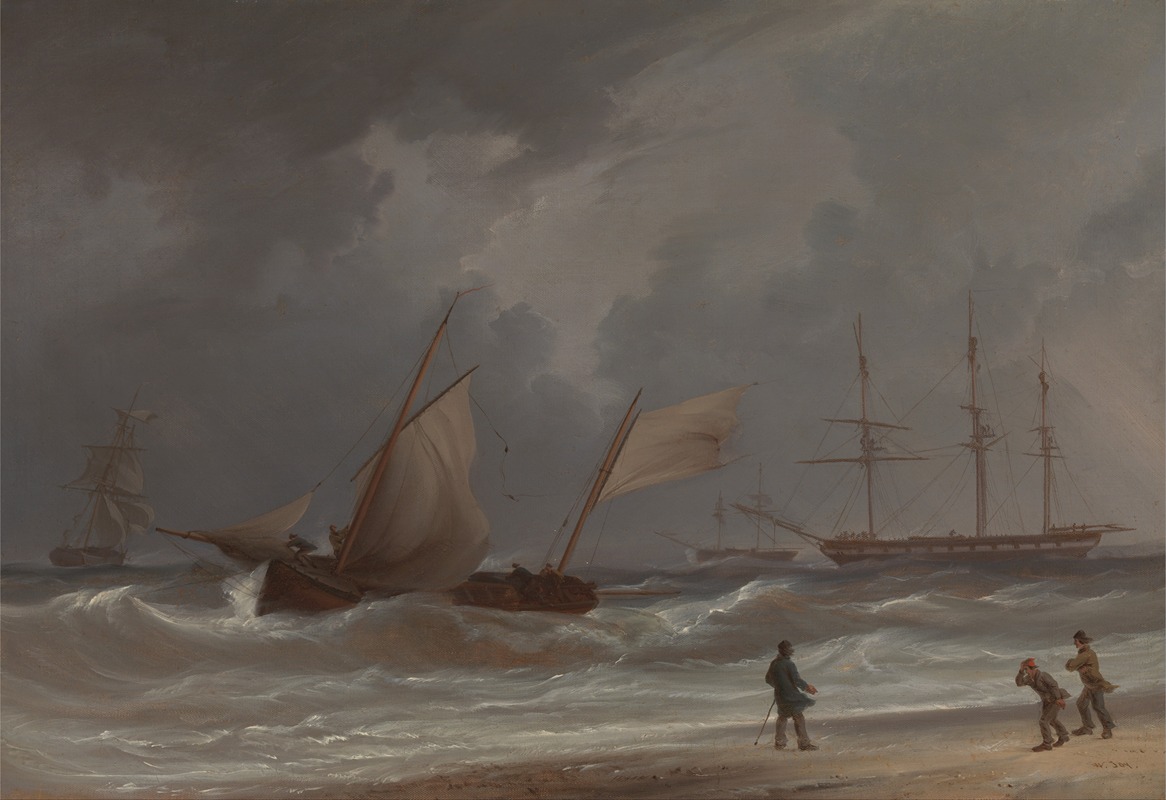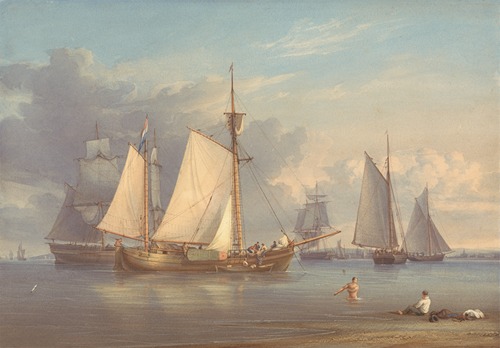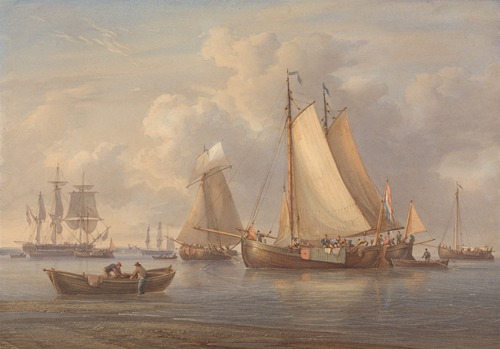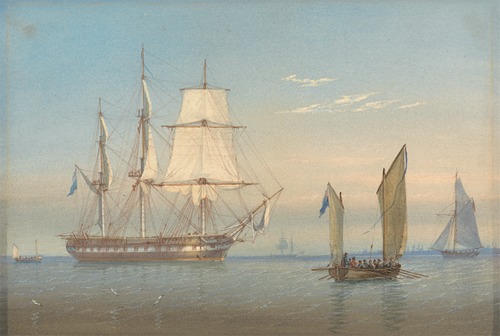
The brothers John Cantiloe Joy, and William Joy, were English marine artists, who lived and worked together. They belonged to the Norwich School of painters, considered to be a unique phenomenon in the history of British art and the most important school of painting of 19th century England.
Born in Southtown (now a part of Great Yarmouth) in the English county of Norfolk, and from a working-class background, they were both expected to become tradesmen. Their talents were recognised by the inventor George William Manby, who became their patron and mentor. In 1818, he provided them with a studio, and trained them to become skilled marine artists. After two years, Manby mounted an exhibition of their work. During the 1820s, the brothers' paintings were exhibited at the Norwich Society of Artists, the Royal Society of British Artists, the Royal Academy and at the British Institution. William moved to London in 1829, where he was commissioned to produce new works; John joined him in London by the following year. In 1832, they moved to Portsmouth to record the area's fishing fleet for the British Government, and then moved to work in Chichester, before finally returning to London. There is some confusion among sources as to the dates of death of the two brothers: John's death is variously stated as occurring in 1857, 1866 or 1859, and that he predeceased William, who may have died in 1867, or in Yorkshire in 1865. However, death certificates confirm their deaths in 1859 and 1865 respectively.
William Joy enjoyed depicting powerful, raging seas and storm-tossed ships: John Joy painted in watercolours and his works are often less dramatic than those of his brother. Most of their publicly owned paintings belong to the Norfolk Museums Collections, based in Norwich.




